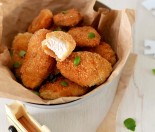Just why are whole grains so beneficial to growing teens? Well, breads and cereals provide teens with carbohydrates, the body’s preferred energy source, as well as fibre and a range of essential vitamins and minerals which growing teens need every day. We look into why teens need whole grains, and provide tips for including whole grains in your teen’s diet.
What are whole grains?
Whole grain products contain all the essential parts (bran, germ, and endosperm) and naturally present nutrients of the entire grain seed. Refined grains (like traditional white bread) on the other hand, contain only the endosperm, and many nutrients and fibre are lost during the milling process.
By including whole grain bread products in your teen’s diet, they can enjoy the softness of bread they love, while still getting some whole grain benefits.
Some important nutrients found in whole grains:
– Carbohydrates: Carbohydrates are the body’s preferred energy source and the ideal fuel for active teenagers. Carbohydrates provide teens with the energy they need to see them through the day, concentrate at school, and to power them when they play sport or do exercise.
– Protein: Protein not only provides teens with energy but it is also needed to support their rapid growth and development. Protein helps to build and repair body tissue (including muscle) and also helps teens to feel fuller for longer.
– Fibre: Fibre is not only an important nutrient to help maintain a healthy digestive system and keep us ‘regular’ but it has also been shown to help reduce the risk of some cancers, Type 2 Diabetes, and heart disease. Eating a diet high in fibre is also beneficial for weight management because foods high in fibre help you to feel fuller for longer and are generally lower in energy.
– B vitamins: Each of the B vitamins have a range of different functions in the body however, most of them help our bodies to produce energy from the food we eat. Since these vitamins are water-soluble and not stored in the body, a continual supply from the diet is best.
– Folate: Folate is a B vitamin, which is necessary for normal blood formation and cell division. It also contributes to normal growth and development.
– Vitamin E: Vitamin E is a powerful antioxidant, which contributes to cell protection from free radical damage. It is also important for normal growth and development.
– Iron: Iron is an essential component of haemoglobin, the part of red blood cells that transports oxygen. It also plays important roles in cognitive development and helps to support the immune system. Iron needs of teens increase as females start to menstruate and as the lean body mass (muscle mass) in males develops.
The health benefits of whole grains
Health aspects of whole grains have long been known and in fact records indicate that Hippocrates, the ‘father of medicine’, recognised the health benefits of whole grain bread back in the fourth Century BC.
Whole grains are rich in nutrients and phytochemicals with a range of known health benefits. They help to reduce the risk of heart disease and some cancers and can help your teen feel fuller for longer periods of time, by providing them with a sustained release of energy to the body. Whole grains can also help with weight control as they’re more filling.
Unfortunately evidence suggests that we’re eating far less wheat and grains than we used to, even 100 years ago (let alone 1000 years ago):

Given the nutrition and health benefits associated with regular consumption of whole grain foods and that the development of lifelong eating habits starts young, it is pertinent to establish a love of whole grains amongst teens early.
By substituting whole grain bread for white bread you’ll help your teen reap the health benefits of eating whole grains while making only a small change in their current diet. However, finding a middle ground with teenagers can be a challenge!
Tips for including whole grains in your teen’s diet
It’s recommended that teens fill up on breads and cereals when hungry. Whole grain breads and cereals are a great choice for snacks and meals which can help to fill teens more than white or refined varieties. When your teens include whole grain bread products in their diet, they can still enjoy the softness of bread they love, while getting the benefits of nutritious whole grains.
Breakfast
Toast with whole grains in the morning
- Top whole grain toast with a thin spread of your favourite nut butter and add a chopped banana.
- Top with cottage cheese, tomato and avocado.
- Add a poached egg or baked beans.
- Serve a low fat milk-based fruit smoothie with a piece of whole grain toast, topped with your favourite spread. Just use a little spread for taste, as spreads can contribute additional calories to the diet.
- If you have a bit more time, try making french toast or ‘eggy-bread’. Top with cinnamon, mixed berries and ricotta (just go easy on the maple syrup).
- Or try mini bacon and egg toast cups (these can also be reheated for lunch, or eaten cold on the run).
Lunch
Sandwich fillings using whole grain bread at lunch time
- Lean meat and salad
- Mashed egg and salad
- Bean and salad
- Cottage cheese, tomato and ham
- Chicken, avocado and tomato
- Tuna or salmon and salad
- Peanut butter and banana
- Extra light cream cheese (or ricotta), dried apricots and finely chopped walnuts
- Hummus and salad
- Dinner leftovers
If your teen is getting bored with the whole sandwich idea, try out their favourite fillings in a whole grain wrap, pita pocket, or even as a sushi sandwich.
Or, make a whole grain bread toasted sandwich for lunch
- Corn, onion and Edam cheese
- Salmon/tuna/chicken/ham, tomato and Edam cheese
- Baked beans and Edam cheese
- Dinner leftovers
Or, try a winter warming soup with whole grain toast
Make a vegetable-based soup packed with lean protein (meat, chicken, seafood, beans, dried peas or lentils) and a piece of whole grain toast. The soup can be heated and kept warm in a thermos until lunch time. You could even add some chopped up whole grain bread to the soup to give it some more ‘bulk’.
Dinner
- Include whole grain bread as a side with the evening meal.
- For a quick and easy dinner idea, try soft-boiled, or poached eggs and baked beans on whole grain toast and serve with a side salad.
- You could also try soup for dinner, with whole grain toast on the side, or whole grain toasted croutons on top.
Snacks
Teens need snacks to provide them with the extra energy and nutrients they need to power through the day. Snacks will also help curb their ever-increasing appetite. Use whole grain bread as the basis for snacks during the day.
Nutritious snack ideas could include:
- Sandwiches – fresh or toasted (see filling ideas above)
- Banana wrapped in bread
- Asparagus rolls
- Baked bread cups filled with egg, salmon, tuna, chicken or ham, vegetables and a little cheese
- Mini pizzas topped with your favourite topping
Now that you know why teens need whole grains, check out our Teen food and nutrition section for more great ideas on keeping your teen’s diet healthy.






